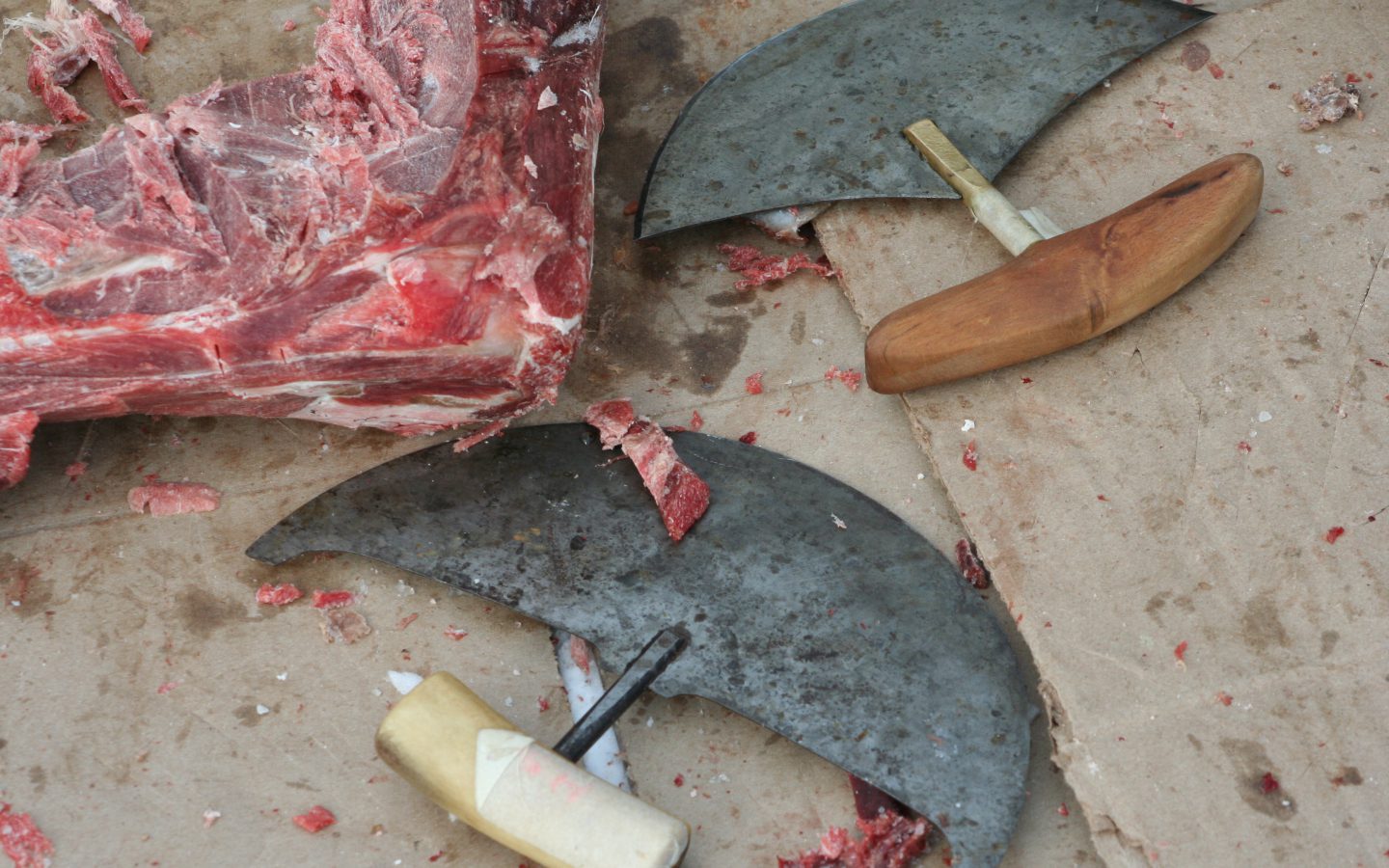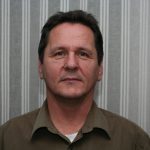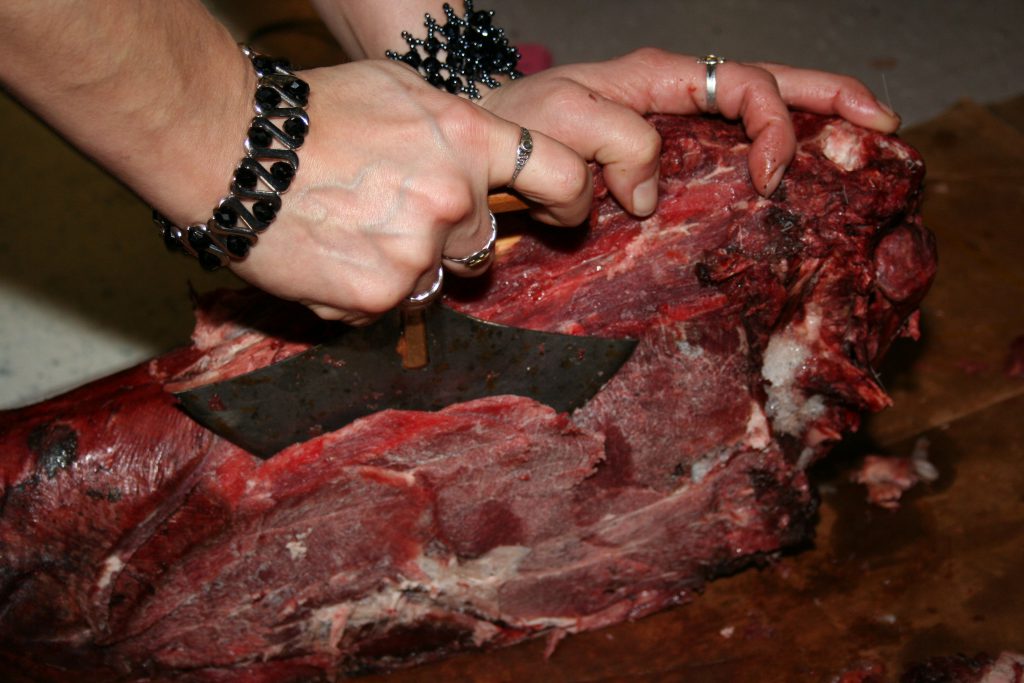Barry Pottle
NÉ À North West River, TN
HABITE À Ottawa, ON


NÉ À North West River, TN
HABITE À Ottawa, ON
Foodland Security 2013
Photographie
Site 5 – Maison principale, Établissement-Ryan, Bonavista
La photographie de Barry Pottle est influencée par la culture inuk dans laquelle il a grandi à Rigolet, au Labrador (Nunatsiavut), et par la culture inuite urbaine dans laquelle il évolue aujourd’hui. Ses œuvres récentes portent sur les traditions, le mode de vie actuel et l’identité. Cette notion lui a inspiré sa série Awareness sur les médailles numérotées du système canadien d’identification des Eskimaux instauré par le gouvernement fédéral (1944–1969).
Sa série Foodland Security traite de la communauté inuite d’Ottawa, la plus grande à l’extérieur du Nord, et de ses efforts pour sauvegarder son identité. Cela inclut la recherche d’aliments sauvages traditionnels comme le caribou, la baleine, le phoque, le lagopède et l’omble chevalier. L’environnementaliste inuite Sheila Watt-Cloutier (The Right To Be Cold) a décrit le sens profond de consommer la « nourriture traditionnelle… que la nature nous accorde », non seulement pour se nourrir, mais pour préserver les gestes et raffermir les liens tissés lors de la chasse, la cuisine et les fêtes. Les études en gros plan de Barry Pottle relatent ces préparations de repas de fêtes. Le titre de sa série fait allusion aux problèmes complexes d’alimentation que connaissent les habitants du Nord, mais aussi tous les autres Canadiens. Des facteurs comme les changements climatiques, la hausse des prix, l’approvisionnement incertain et l’effondrement de la pêche ont intensifié le débat sur la sécurité alimentaire chez les résidents de Terre-Neuve-et-Labrador. PG
Barry Pottle, Foodland Security, 2013. 10 photographies numériques sans titre.

Pour en savoir plus sur Barry Pottle
Les oeuvres de Barry Pottle figuraient dans l’exposition collective nationale de 2016 SakKijâjuk: Art and Craft from Nunatsiavut. Sa Awareness Series rappelle le système d’identification des Esquimaux instauré par le gouvernement canadien (1940-1970) pour identifier à l’aide de médailles numérotées les Inuits de l’est et de l’ouest de l’Arctique. Cette série, qui faisait partie de l’exposition Decolonize Me, 2011-2015, a fait l’objet d’une exposition en solo à la galerie Feheley Fine Art, à Toronto, en 2016.


BORN North West River, NL
LIVES Ottawa, ON
Foodland Security 2013
Photography
Site 5 – Proprietor’s House, Ryan Premises, Bonavista
Barry Pottle’s photographic practice is shaped by the Inuk culture within which he grew up in Rigolet, Labrador (now Nunatsiavut) and the urban Inuit culture within which he now lives. Recent work has touched on traditions, current lifestyles, and identity, the latter through his Awareness series focused on the federal government’s 1944–1969 use of numbered Eskimo Identification Tags.
Pottle’s Foodland Security series is based in Ottawa’s Inuit community, the largest outside the North, and on efforts to maintain and celebrate aspects of its identity. This includes the struggle to find wild foods—caribou, whale, seal, ptarmigan, char—that traditionally have sustained them. Inuit climate change activist Sheila Watt-Cloutier (The Right To Be Cold) has described the deep significance of eating “country food … that the land around us provides”, not only for physical sustenance but for the practical skills and social bonds created through hunting, food preparation and communal feasts. Pottle’s close-up photographic studies reflect preparations for such a feast. His series title alludes to complex issues surrounding food, most acutely felt in the North but increasingly affecting other Canadians. Factors such as climate change, high prices, uncertain supply chains, and collapse of the cod and other fisheries have intensified Newfoundland and Labrador residents’ dialogues about food security. PG
Barry Pottle, Foodland Security, 2013. 10 untitled digital photographs.

Pour en savoir plus sur Barry Pottle
Barry Pottle’s work was in the 2016 national group exhibition SakKijâjuk: Art and Craft from Nunatsiavut. His Awareness Series drew attention to the Eskimo Identification System of numbered tags used by the Canadian Government (1940-1970) to identity Inuit in the Eastern and Western Arctic. Part of the exhibition Decolonize Me, 2011-2015, the series also was a solo show at Feheley Fine Art, Toronto in 2016.